Guide to Biodiversity Net Gain
Transform your building into an eco-friendly oasis with a green roof that supports biodiversity and promotes sustainable development.
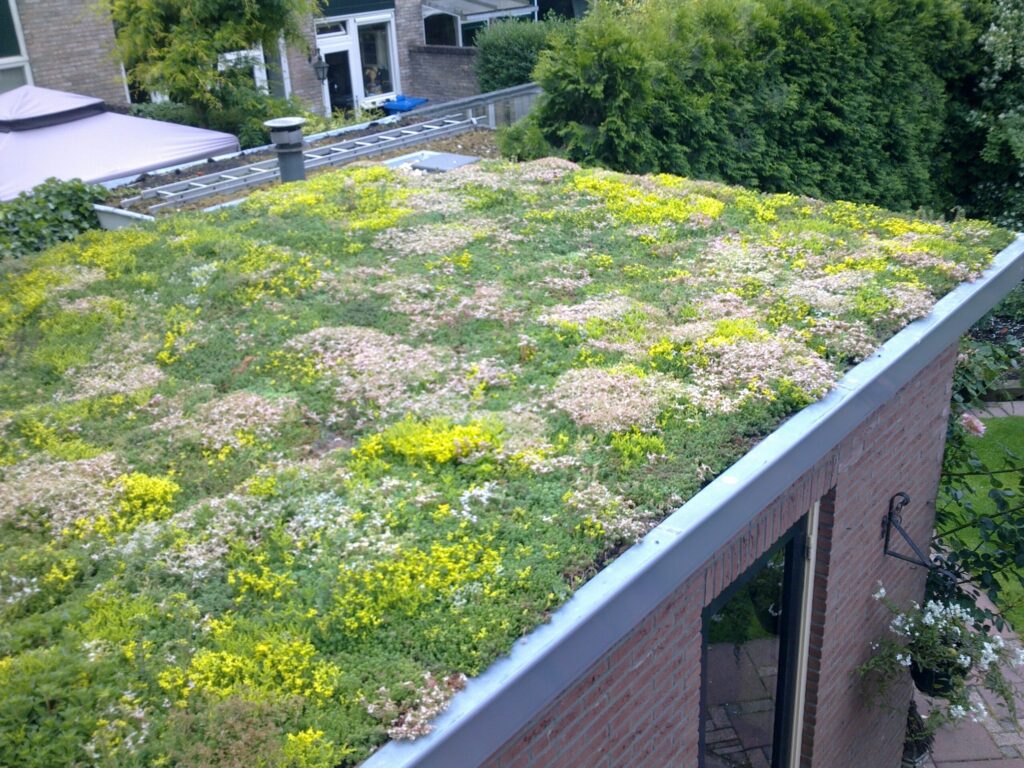
Biodiversity Net Gain
Biodiversity net gain and green roofs play a key role in modern sustainable development. Biodiversity Net Gain (BNG) is an approach that requires new developments to leave the natural environment in a better state than before.
It is becoming a crucial aspect of planning regulations, especially in the UK, as part of the government’s commitment to reversing biodiversity loss and promoting sustainable development. This also means working closely with the local planning authority to ensure compliance and measurable outcomes.
By increasing biodiversity through various construction practices, such as the installation of green roofs, developers can significantly improve the natural environment, contributing to global conservation efforts. In doing so, projects also play a role in wider nature recovery across towns and cities
Green roofs, often covered with vegetation and designed to promote biodiversity, are an ideal solution for achieving BNG. They are also suitable for small sites where space is limited, but ecological gains are still possible.
These roofs offer a wide range of environmental benefits, including habitat creation, rainwater management, improved air quality, and urban cooling. This makes them an effective choice for developers in England who must meet strict environmental standards.
As cities grow, integrating green roofs into buildings is essential in ensuring that development projects contribute positively to the natural world, rather than detract from it.
What is Biodiversity Net Gain?
Biodiversity Net Gain (BNG) is a policy framework that ensures new developments contribute positively to biodiversity.
Simply put, it mandates that projects must leave the environment in a better state than it was before development began. BNG goes beyond minimising damage to nature; it focuses on improving biodiversity, ensuring that wildlife and ecosystems thrive in urban spaces.
BNG is becoming a mandatory requirement in the UK, and it’s increasingly being incorporated into planning regulations for construction projects.
As part of the government’s commitment to improving biodiversity, BNG is designed to help halt the ongoing loss of wildlife, protect endangered species, and restore ecosystems that have been damaged by human activity.
It is an essential component of the UK’s strategy to meet global biodiversity targets and is becoming an integral part of sustainable development.
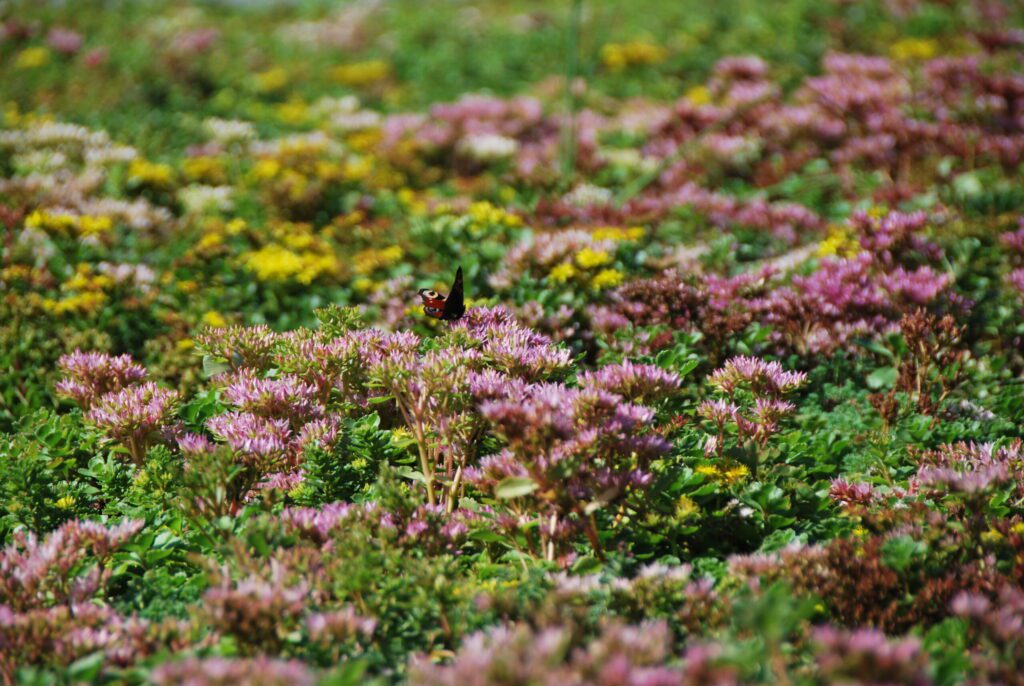
How to Improve Biodiversity Net Gain with a Green Roof
Green roofs play an important role in achieving Biodiversity Net Gain (BNG) by providing vital green spaces in urban environments.
These roofs support a variety of plant species, promote habitat creation, and imrpove the overall biodiversity of a site.
Incorporating green roofs into development projects is a practical and effective way to meet BNG targets, especially in areas where space for traditional green spaces is limited.
Habitat Creation
Green roofs create habitats for birds, insects, and small mammals. By incorporating a variety of plants, these roofs can support a wide range of species, including pollinators such as bees and butterflies.
Increased Green Space
In urban environments where open space is scarce, green roofs provide a much-needed addition to the overall green infrastructure. They offer a valuable alternative to traditional gardens or parks.
Rainwater Management
Green roofs help absorb and manage rainwater, which is crucial for mitigating the effects of flooding. The rainwater absorbed by the plants also improves the microclimate and creates a more diverse ecosystem.
Urban Heat Island Effect
Green roofs help reduce the urban heat island effect by cooling the environment and improving air quality. This creates a more favourable habitat for wildlife and increases the overall biodiversity of a development site.
Long-Term Sustainability
Green roofs require minimal maintenance, and with proper design and plant selection, they can thrive for decades. This long-term sustainability contributes to the ongoing achievement of BNG.
Effective Implementation of Green Roofs:
Plant Selection: Choosing native plants and species that are adapted to the local climate is crucial for the success of a green roof. The roof supports a diverse range of species, including those that are beneficial for local ecosystems.
Design Considerations: Effective design is essential to maximize the ecological value of a green roof. Considerations such as varying plant heights, creating microhabitats, and adding features like nesting boxes for birds can imrpove biodiversity.
Integration with Other Green Infrastructure: Green roofs work well alongside other green infrastructure solutions such as living walls, green corridors, and sustainable drainage systems (SuDS), which further contribute to the overall biodiversity improvements on a development site.
Boost Biodiversity with Green Roofs
What Are the Key Components of Mandatory BNG?
To comply with BNG regulations, developers need to meet several key components, each of which is designed to make sure that biodiversity is integrated into development planning and outcomes.
The core components are:
Measure Existing Biodiversity
Before any development begins, developers must assess and measure the biodiversity of the site in its existing state.
This assessment is crucial for understanding the baseline biodiversity levels and establishing a point of comparison for future improvements.
The results of this biodiversity measurement guide the development of plans that aim to improve the site’s ecological value.
This process involves identifying and cataloguing the species and habitats currently present on the site.
By doing so, developers can gain insight into the biodiversity risks and opportunities specific to their site and determine the most appropriate actions to improve it.
Set a Plan
After measuring existing biodiversity, developers must create a biodiversity net gain plan.
This plan outlines the actions that will be taken to improve biodiversity and establish that all relevant parties, including local authorities, are on board. The plan should include details about the types of habitats to be created or improved, the species to be supported, and how the plan will be maintained over time.
Approval from the local authority is typically required before development can proceed.
The plan might include the use of green roofs, sustainable drainage systems, and other nature-based solutions to increase the biodiversity on the site.
These features not only help to meet BNG requirements but also bring additional environmental benefits, such as improved air quality and water management.
Deliver a Net Gain
The ultimate goal of BNG is for developments to leave the natural environment in a better state than they found it.
This means that, after the development is completed, the biodiversity on the site should be improved, often measured in biodiversity units.
Achieving a net gain involves not just preserving existing habitats but also creating new ones or enhancing those that already exist.
Green roofs can significantly contribute to delivering a net gain.
By providing a new habitat for flora and fauna in urban areas, green roofs increase the available green space and improve the overall biodiversity of the development site.
Use a Metric
The Department for Environment, Food and Rural Affairs (DEFRA) has created a biodiversity metric, which is used to measure biodiversity in units.
This metric enables developers to assess both the baseline biodiversity and the improvements made during the development process.
It helps to quantify the impact of various interventions, such as the installation of green roofs, and make certain that a measurable biodiversity net gain has been achieved.
The DEFRA biodiversity metric takes into account factors like habitat quality, size, and the number of species supported.
By using this tool, developers can guarantee that their efforts to improve biodiversity are not only meaningful but also measurable, allowing them to track progress and demonstrate compliance with BNG regulations.
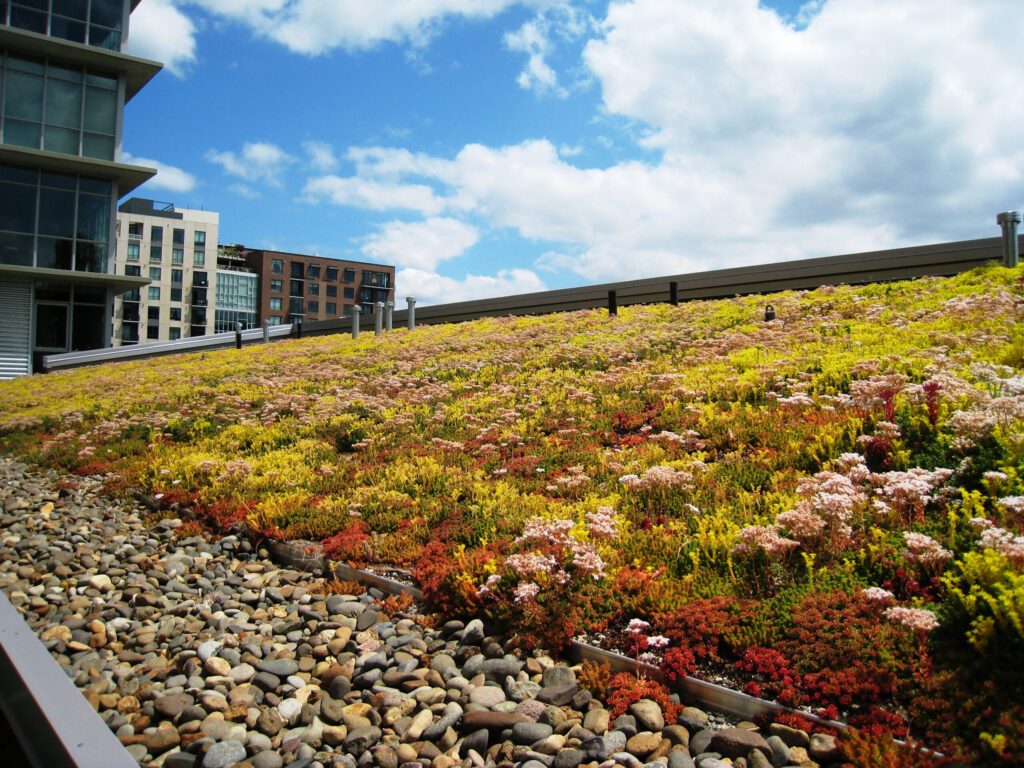
How to Achieve Biodiversity Net Gain
Achieving Biodiversity Net Gain (BNG) is a multi-step process that involves careful planning, expert consultation, and the use of nature-based solutions.
Here’s a step-by-step guide to help developers meet BNG requirements:
Step 1: Measure Existing Biodiversity
Before any development begins, assess the biodiversity on the site using tools like the DEFRA biodiversity metric. This will help establish a baseline level of biodiversity and determine the amount of improvement needed.
Step 2: Set Clear Biodiversity Goals
Developers must set clear and measurable biodiversity targets based on the baseline assessment. These goals should aim to increase biodiversity and are typically expressed in biodiversity units.
Step 3: Develop a Biodiversity Plan
Create a detailed biodiversity plan. This should include specific actions to improve biodiversity on the site, such as creating wildlife habitats, using green roofs, or enhancing existing green spaces. The plan must be approved by local authorities before work can proceed.
Step 4: Implement Green Infrastructure Solutions
Incorporating green infrastructure such as green roofs, living walls, and sustainable drainage systems (SuDS) is key to meeting BNG targets. These solutions create habitats for wildlife and contribute to biodiversity improvement. Green roofs, in particular, provide a unique opportunity to add plant life and support local wildlife in urban environments.
Step 5: Monitor and Maintain Biodiversity
After the development is completed, it’s important to monitor the biodiversity on the site regularly. This ensures that the biodiversity improvements are sustained. Ongoing maintenance, such as the management of green roofs and habitat spaces, is crucial for long-term success.
Step 6: Report Progress
Developers must provide evidence of their biodiversity improvements, often using the DEFRA biodiversity metric to track progress. Regular reports to local authorities may be required to demonstrate compliance.
By following these steps, developers can achieve BNG and contribute to environmental sustainability while meeting legal requirements.
Green roofs are a particularly effective tool in this process, as they support biodiversity in urban spaces and provide long-term environmental benefits.
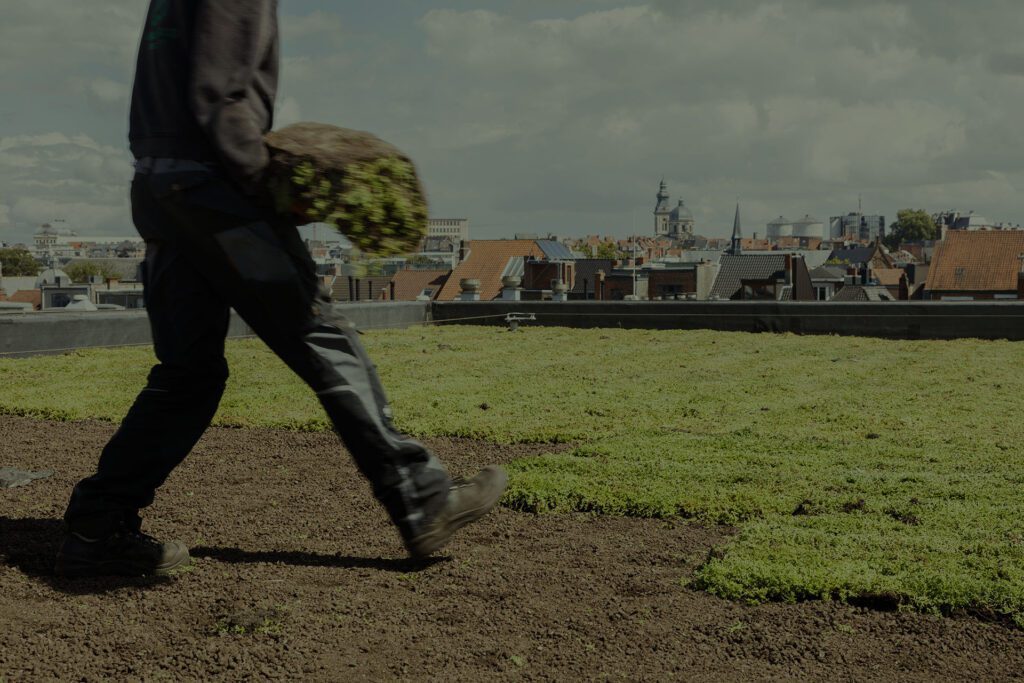
Biodiversity Net Gain Exemptions
While Biodiversity Net Gain (BNG) is becoming a mandatory requirement for many development projects, there are certain exemptions where BNG might not apply.
These exemptions typically depend on the type of development, its location, and the scope of the environmental impact.
Understanding these exemptions is crucial for developers to establish compliance and avoid unnecessary planning complications.
Some common exemptions from mandatory BNG include:
1
Small-Scale Developments
Certain smaller development projects may be exempt from BNG requirements. This typically includes developments that are below a specific threshold, such as projects under a certain number of dwellings or square footage, depending on the regulations set by local authorities.
2
Certain Types of Projects
Developments like temporary structures, some types of infrastructure projects (e.g., roads or energy installations), and minor renovations may not be subject to the full BNG regulations.
3
Sites of Special Scientific Interest (SSSI)
In some cases, developments on SSSIs may be subject to different biodiversity regulations, and developers might not need to apply BNG in the same way as for other sites. However, even in these cases, developers are still required to protect and maintain biodiversity.
4
Exemptions Due to Practical Challenges
Projects where BNG implementation would be practically impossible or disproportionately expensive, such as developments on heavily urbanised land or sites where biodiversity restoration is unfeasible, may be eligible for exemptions or modifications in their biodiversity strategy.
These exemptions provide flexibility while still encouraging developers to boost biodiversity where possible.
Developers should always check with local authorities or consult a biodiversity expert to determine whether their project qualifies for an exemption.
Boost Biodiversity with Green Roofs
Biodiversity Net Gain Planning
For developers and planners, integrating Biodiversity Net Gain (BNG) into project plans requires careful consideration and thorough planning.
The process of ensuring that a development project meets BNG goals is not a one-time task but rather an ongoing process that involves collaboration across multiple teams.
Here’s how to approach BNG planning:
Early Integration: The planning process should incorporate BNG considerations from the outset. This includes assessing the site’s current biodiversity, understanding the types of species and habitats present, and identifying opportunities for improvement or creation of new habitats. The earlier BNG is integrated into the planning phase, the more effective it will be.
Collaborating with Experts: Developers should work with ecologists and other biodiversity experts to assess the site’s biodiversity and develop a detailed biodiversity management plan. This plan should outline specific strategies for Improving and maintaining biodiversity, such as using green roofs, green corridors, or native planting schemes.
Defining Clear Goals: Developers must set clear biodiversity targets in line with local regulations, including the specific number of biodiversity units required to achieve a net gain. These goals should be measurable, ensuring that progress can be tracked throughout the development process.
Consulting with Local Authorities: A biodiversity plan must be submitted to and approved by the local authority before development can proceed. This makes sure that all aspects of the project align with local biodiversity goals and regulatory requirements. Ongoing consultation throughout the development process may also be necessary to address any changes or challenges.
Monitoring and Maintenance: Once the development is complete, continuous monitoring and maintenance are necessary to see that the biodiversity improvements are sustained over time. This could include regular biodiversity assessments and ensuring that green infrastructure, like green roofs, continues to thrive.
Effective BNG planning involves collaboration, expertise, and a long-term approach to monitoring and enhancing biodiversity.
Developers who integrate these considerations into their project planning are more likely to successfully achieve BNG and make a positive environmental impact.

Mandatory Biodiversity Net Gain
The introduction of mandatory Biodiversity Net Gain (BNG) regulations represents a significant shift in the way developers approach environmental impact. As of 2023, BNG has become a legal requirement for many developments in the UK, and this legal framework is expected to expand in the coming years.
Legal Implications
With BNG now mandatory, developers must comply with a set of regulations designed so that their projects not only mitigate harm to the environment but also actively contribute to its restoration.
Failure to comply with BNG requirements can lead to planning delays, fines, or, in the worst-case scenario, the inability to proceed with a project.
Timeline for Implementation
- 2023: The legal framework for mandatory BNG came into effect for most developments. Developers need to make sure that they are measuring and enhancing biodiversity at every stage of the development process.
- 2024 and beyond: The scope of BNG regulations will continue to expand, with stricter enforcement expected in the coming years. By 2024, BNG requirements will apply to more types of development, including major infrastructure projects and some smaller-scale residential developments.
Steps for Compliance
- Site Assessment: Developers must assess the existing biodiversity on the site before any development begins.
- Plan Development: A biodiversity net gain plan must be created, approved by local authorities, and implemented during the project.
- Ongoing Monitoring: Developers should ensure that biodiversity improvements are tracked and maintained long after the project is completed.
- Achieving Net Gain: Developers must prove that the development leaves the environment in a better state than it found it, with measurable biodiversity improvements.
The legal implications of mandatory BNG emphasize the importance of early planning and compliance.
Developers should engage with local authorities and biodiversity experts to make sure their projects meet legal requirements and contribute positively to biodiversity.
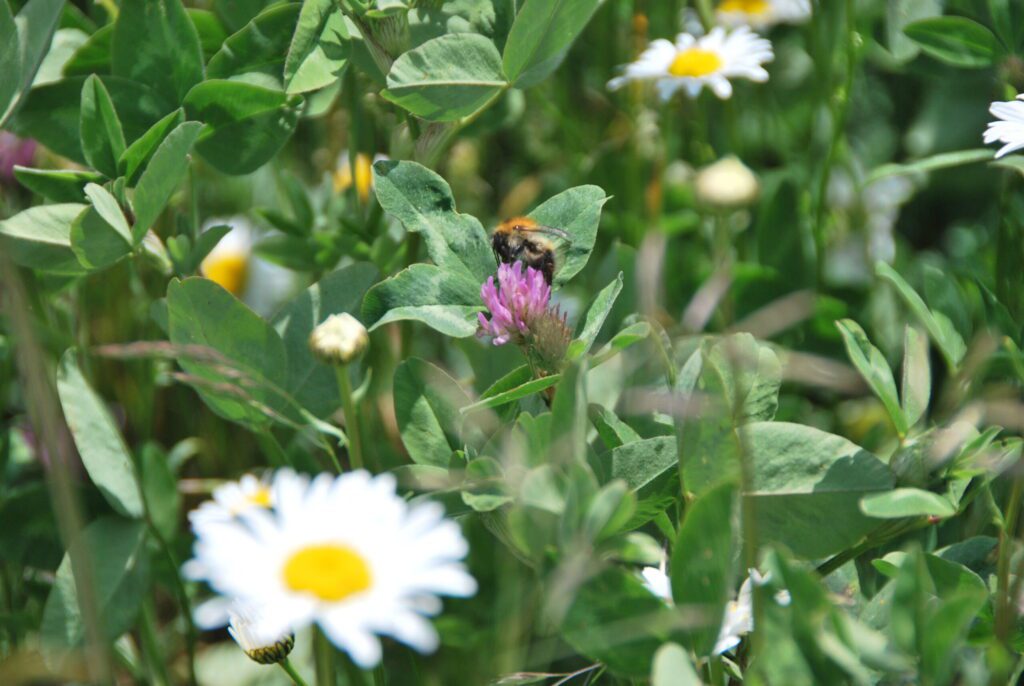
Stakeholder Impact
Biodiversity Net Gain (BNG) regulations impact various stakeholders involved in construction projects.
Understanding how these regulations affect different groups is crucial for successful project planning and compliance. Below, we explore how BNG affects land developers, landowners, and architects.
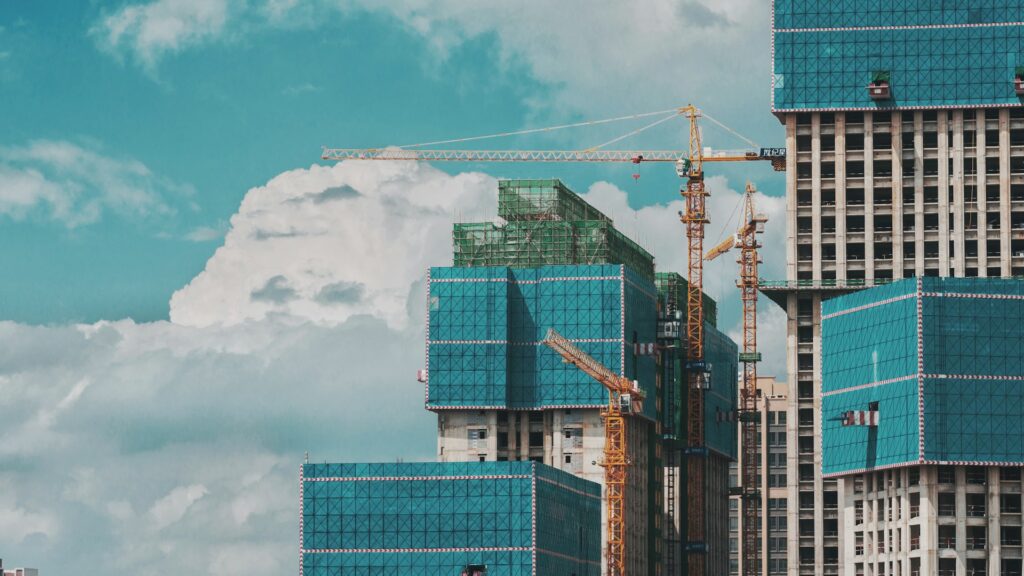
Land Developers – What Does BNG Mean for You?
For land developers, the introduction of BNG regulations means taking a proactive approach to biodiversity.
Developers are required to demonstrate that their projects will improve biodiversity and leave the environment in a better state than before.
This has several implications:
- Impact on Project Timelines: The need to assess existing biodiversity, create detailed plans for biodiversity, and monitor progress throughout the development process can extend project timelines. Developers must factor this additional work into their schedules for compliance.
- Cost Considerations: Incorporating BNG measures, such as green roofs and other nature-based solutions, may increase initial costs. However, these costs are often outweighed by long-term environmental benefits and the potential for higher property values and tenant satisfaction due to the inclusion of green spaces.
- Planning and Permits: Developers must submit their biodiversity plans to local authorities for approval before proceeding. This adds another layer of complexity to the planning and permitting process but is necessary to meet legal requirements and that biodiversity goals are met.
- Long-Term Maintenance: Ongoing monitoring and maintenance are required to sustain the biodiversity improvements over time. This includes ensuring that green roofs and other features remain healthy and functional.
Landowners – What Does BNG Mean for You?
Landowners are also impacted by BNG regulations, especially if they are developing or planning to develop their properties.
Understanding the responsibilities associated with BNG is essential for ensuring compliance and contributing to environmental sustainability.
- Responsibility for Biodiversity: Landowners must ensure that biodiversity is not only preserved but improved through development. This means taking action to improve the quality of habitats on the site, such as incorporating green roofs, planting native species, and managing water resources effectively.
- Engagement in the Planning Process: Landowners must work closely with developers, ecologists, and local authorities to confirm that biodiversity goals are integrated into the project’s design and planning phases.
- Incentives for Biodiversity: By incorporating BNG into their development
plans, landowners can increase the value of their property. Green spaces and biodiversity improvements can increase the appeal of residential and commercial developments, potentially attracting higher rents or sales prices. - Ongoing Maintenance and Monitoring: As with developers, landowners are responsible for ensuring that biodiversity improvements are maintained over time. This includes overseeing the maintenance of green roofs, wildlife habitats, and other biodiversity features.


Architects – What Does BNG Mean for You?
Architects play a critical role in designing developments that meet BNG requirements. Their designs must integrate biodiversity features in a way that complements the overall aesthetic and functionality of the project.
- Incorporating Biodiversity into Designs: Architects need to incorporate biodiversity considerations from the beginning of the design process. This might involve designing spaces for green roofs, wildlife corridors, and sustainable drainage systems that support biodiversity.
- Green Roof Integration: Architects are in a unique position to integrate green roofs into their designs. These roofs not only contribute to achieving BNG but also offer aesthetic and environmental benefits such as better insulation, improved air quality, and noise reduction.
- Collaboration with Other Stakeholders: Architects must collaborate with ecologists, developers, and local authorities to make sure that their designs meet the biodiversity goals set out in the project’s biodiversity plan. This may require modifying designs to incorporate additional green infrastructure or adjusting the use of materials to support local ecosystems.
- Monitoring and Reporting: Architects may also play a role in ensuring that the biodiversity features in their designs are maintained over time. This could include working with landscape architects or contractors to plant species on green roofs or in green spaces.
Frequently Asked Questions
When is Biodiversity Net Gain Required?
BNG is required for most developments when submitting planning applications. It is applicable to projects involving construction, major renovations, and infrastructure that impact the natural environment. The requirement begins at the planning stage.
When Will Biodiversity Net Gain Be Mandatory?
BNG became legally mandatory for most developments in 2023. The phased enforcement means that, by 2024, it will be enforced across a wider range of development projects, with stricter compliance checks.
What is a Biodiversity Gain Plan?
A biodiversity gain plan outlines how a development will increase biodiversity. It should include an assessment of existing biodiversity, strategies for improvement, and measurable targets. Developments must meet BNG requirements and be approved by local authorities.
What is On-Site and What is Off-Site for BNG?
On-site improvements occur directly on the development site, such as creating green roofs or planting native species. Off-site improvements involve actions taken elsewhere, like contributing to local conservation projects. Both types can be used to meet BNG requirements, but on-site improvements are typically preferred.
Is it a Legal Requirement to Achieve BNG?
Yes, it is now a legal requirement to achieve BNG for many development projects in the UK. Non-compliance can result in planning delays, fines, or refusal of planning applications, as well as potential environmental and reputational risks.
How Do Green Roofs Contribute to Biodiversity Net Gain?
Green roofs provide habitats for wildlife, support plant species, and offer space for pollinators and birds. They improve air quality, reduce urban heat islands, and manage rainwater runoff. Improving biodiversity in buildings, they are a key strategy for meeting BNG targets.
Can Biodiversity Net Gain Be Achieved on Smaller Projects?
Yes, BNG can be achieved on smaller projects, although the scale of improvement may be less extensive. Developers may focus on more cost-effective solutions such as green walls, roof gardens, or creating small green spaces to contribute to biodiversity.
How to Comply with BNG?
To comply, developers must assess the existing biodiversity on a site, create a biodiversity gain plan, and implement strategies to help the environment. This may include adding green roofs, planting native species, and using sustainable drainage systems. The plan must be approved by local authorities and monitored for long-term success.
How to Achieve Biodiversity Net Gain?
Achieving BNG involves assessing the site’s current biodiversity, setting clear biodiversity goals, and implementing BDG strategies such as green roofs, wildlife corridors, or native planting. Developers must track progress using the DEFRA biodiversity metric to demonstrate a net gain.
What Are the New Rules for Biodiversity Net Gain?
New rules for BNG require that all major developments assess and improve biodiversity before proceeding. Developers must use the DEFRA biodiversity metric to measure improvements and submit a biodiversity gain plan for approval. By 2024, these regulations will be fully enforced across more types of developments.
What is the BNG Strategy?
The BNG strategy involves planning, measuring, and enhancing biodiversity through the development process. It includes initial assessments of biodiversity, setting targets for improvement, implementing green infrastructure like green roofs, and ensuring long-term monitoring and maintenance to meet net gain goals.
What Are the BNG Requirements for 2024?
By 2024, BNG will be mandatory for a wider range of developments, including residential, commercial, and infrastructure projects. Developers will need to integrate biodiversity improvements into their designs, submit biodiversity gain plans, and meet measurable net gain targets as part of the planning application process.
